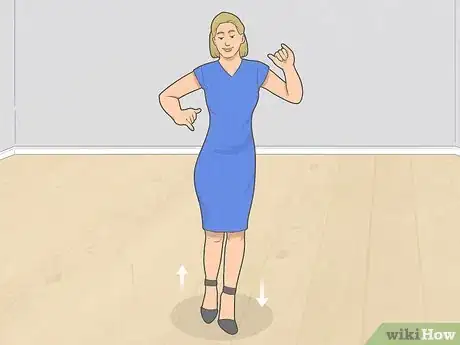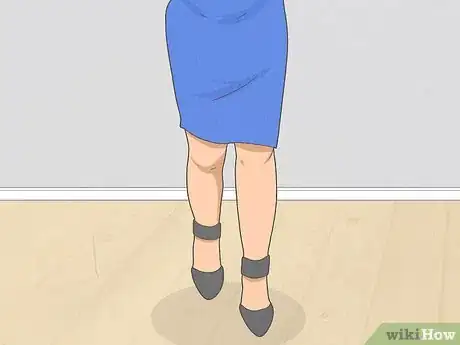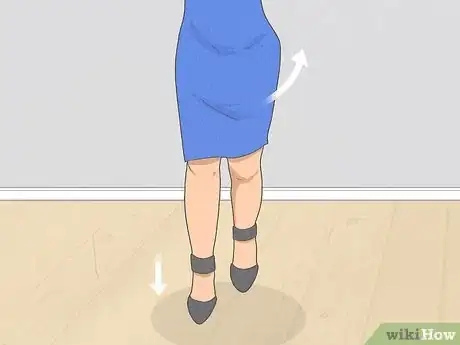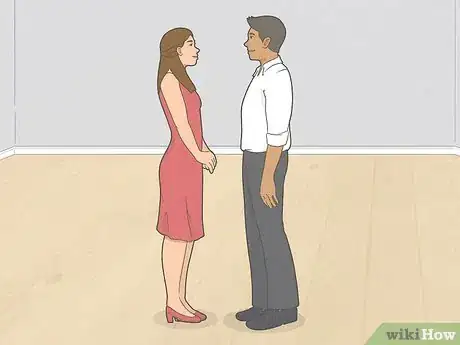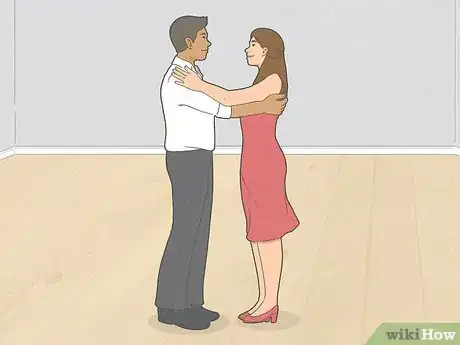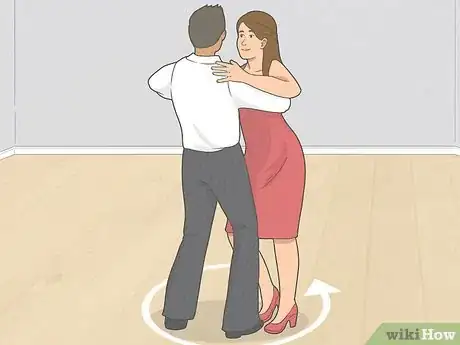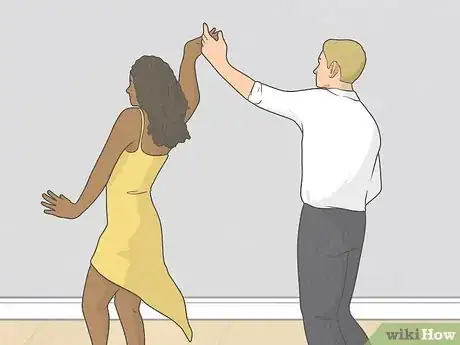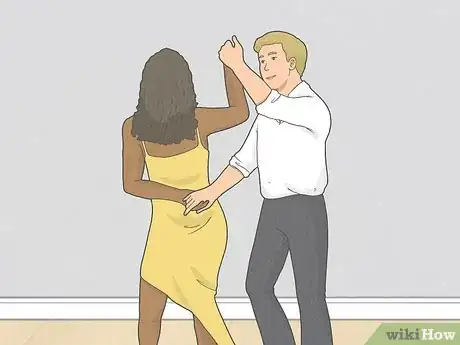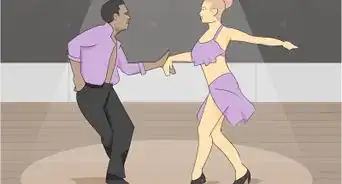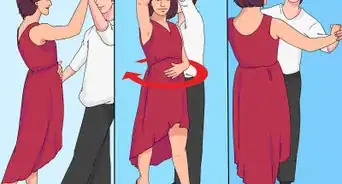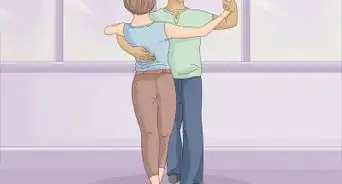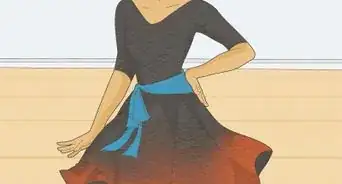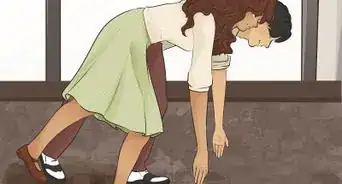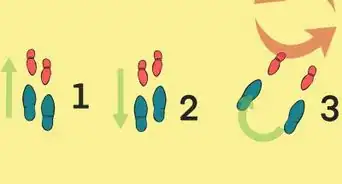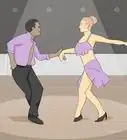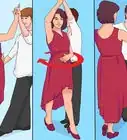This article was co-authored by Andrey Stanev and by wikiHow staff writer, Hannah Madden. Andrey Stanev is a Professional Dance Instructor specializing in ballroom, Latin and wedding dance. With over 25 years of instruction and dancing experience, Andrey is also the Owner of Ballroom Dance in NYC, a studio based in Manhattan, New York and in Hawthorne, New York. He was born and raised in Bulgaria and won the Bulgarian National Championship for Ballroom and Latin Dance in 2000-2001. He has also worked at the Fred Astaire Dance Studio where he received the Award for Outstanding Performance in the advanced department of teaching.
There are 11 references cited in this article, which can be found at the bottom of the page.
This article has been viewed 106,285 times.
The merengue is a fast-paced Dominican dance that you can do with a partner or on your own. Any new dance takes practice to learn, but the merengue has some pretty basic steps that aren’t hard to memorize. Once you’ve got the essential elements down, you can have fun adding turns and twists to your dance with a partner.
Steps
Trying the Basics
-
1March in place on every beat.[1] If you’re following, start marching with your right foot. If you’re leading, start marching with your left. For every count of the beat, march 1 step.[2]
- You don’t need to pick your feet up very high—about 2 to 3 inches (5.1 to 7.6 cm) is all you need to march in place.
-
2Bend both knees slightly as you pick your feet up. To give yourself a little bounce, keep your knees bent as you make each movement. Try not to lock your knees up, or you might look stiff. The merengue is all about fluid, even motion.[3]
- Keeping your knees bent will also help you keep your steps going in one fluid motion.
Advertisement -
3Shift your weight to the foot you’re stepping down on. For each step that you take, naturally let your hip fall down in time with your feet as you shift your weight. You don't need an excessive hip shaking or gyrating—just that natural hip movement that takes place when you shift weight.[4]
- Your hips may move slightly up and down as you sway back and forth.
- This motion will come naturally to you as you practice the movements more.
Tip: Try not to force your hips to sway, since that can make your movements look unnatural.
-
4Listen to merengue music to feel the rhythm. Merengue music is all in 4/4 time, so it’s easy to apply to almost any song. Fernando Villalona, Juan Luis Guerra, Eddy Herrera, and Toño Rosario are all artists with great merengue music you can listen to and practice with.[5]
- You can also find merengue mixes on YouTube with hours and hours of songs playing continuously.
Dancing with a Partner
-
1Face your partner and stand about 3 inches (7.6 cm) apart. The merengue is a pretty intimate dance, so you’ll want to start out with someone you know pretty well. Start by facing each other and then move in closer so there isn’t much distance between the two of you.[6]
Tip: If you want to practice with a partner but you don’t know anyone willing to dance with you, try finding a merengue class in your area.
-
2Put your hand on your partner’s shoulder blade. Lift both of your arms up to about shoulder-height. If you’re the leader, put your right hand on your partner’s left shoulder blade, and if you’re the follower, put your left hand on your partner’s right shoulder blade.[7]
- This is also called closed dance position.[8]
-
3Grab your partner’s free hand with your other hand. Now, put your free arm up in an L shape at about shoulder-height. Grasp your partner’s free hand in yours for a secure hold.[9]
- If you’re the leading partner, you’ll raise your left hand. If you’re the follower, you’ll raise your right hand.
-
4Travel across the floor in a circle.[10] With this basic marching step, start moving back and forth, left and right. If you’re the leading partner, rotate slowly in a 360 degree turn. Take a full 8 beats to do the turn, and try not to rush your movements.[11]
- If you’re feeling groovy, take 16 counts to do the turn instead of 8.
Adding Advanced Moves
-
1Try a one-handed turn. While doing the basic steps, grab both of your partner’s hands in your own. If you’re the leading partner, keep one hand clasped and lift the other one in the air, letting your partner turn either inside or outside of their own arm. If you’re the follower, keep one hand on your partner’s and spin underneath your own arm in one direction.[12]
- Keep the basic step going the entire time! Turn at the same pace you're stepping: a casual 1, 2, 3, 4.
-
2Add in two-handed turns. Slide out into the same open position you would for one-handed turns, and, this time, lift both hands up into the air. If you’re the following partner, go under both of your arms in a 360 degree turn, ending with your arms crossed. To uncross your arms, turn back around in the opposite direction.[13]
Alternative: Or, the leading partner can turn also to uncross the following partner’s arms. This will get you both back to a normal, open stance.
-
3Do the hammerlock turn. If you’re the leading partner, raise one hand up in the air and turn your partner to the outside. If you’re the following partner, wrap one of your arms behind your back and keep one arm out. This will put you directly next to your partner so you’re side-by-side. If you’re the leading partner, put your free hand on your partner’s hip.[14]
- If you'd like, keep that momentum and turn in a slow, 360 degree circle. Then, unwind the following partner by taking their free hand and spinning her back the other direction, resuming a normal stance.
-
4Add in a cuddle turn. If you’re the leader, raise one hand up in the air and turn your partner to the inside. If you’re the follower, wrap both of your arms around yourself and stand directly in front of your partner. Next, if you’re the leading partner, move your partner to the side and stand hip to hip with them.[15]
- You can take your momentum to move around in a circle, with the following partner going backwards.
Expert Q&A
Did you know you can get expert answers for this article?
Unlock expert answers by supporting wikiHow
-
QuestionHow do you do the merengue dance for beginners?
 Andrey StanevAndrey Stanev is a Professional Dance Instructor specializing in ballroom, Latin and wedding dance. With over 25 years of instruction and dancing experience, Andrey is also the Owner of Ballroom Dance in NYC, a studio based in Manhattan, New York and in Hawthorne, New York. He was born and raised in Bulgaria and won the Bulgarian National Championship for Ballroom and Latin Dance in 2000-2001. He has also worked at the Fred Astaire Dance Studio where he received the Award for Outstanding Performance in the advanced department of teaching.
Andrey StanevAndrey Stanev is a Professional Dance Instructor specializing in ballroom, Latin and wedding dance. With over 25 years of instruction and dancing experience, Andrey is also the Owner of Ballroom Dance in NYC, a studio based in Manhattan, New York and in Hawthorne, New York. He was born and raised in Bulgaria and won the Bulgarian National Championship for Ballroom and Latin Dance in 2000-2001. He has also worked at the Fred Astaire Dance Studio where he received the Award for Outstanding Performance in the advanced department of teaching.
Professional Dance Instructor
References
- ↑ Andrey Stanev. Professional Dance Instructor. Expert Interview. 20 May 2020.
- ↑ https://www.youtube.com/watch?v=amuqoK53QVU&feature=youtu.be&t=54
- ↑ https://www.youtube.com/watch?v=M_BBdnfs79A&feature=youtu.be&t=15
- ↑ https://www.youtube.com/watch?v=amuqoK53QVU&feature=youtu.be&t=69
- ↑ https://www.youtube.com/watch?v=iaZbCGyLcPk&feature=youtu.be&t=48
- ↑ https://www.youtube.com/watch?v=amuqoK53QVU&feature=youtu.be&t=330
- ↑ Andrey Stanev. Professional Dance Instructor. Expert Interview. 20 May 2020.
- ↑ Andrey Stanev. Professional Dance Instructor. Expert Interview. 20 May 2020.
- ↑ Andrey Stanev. Professional Dance Instructor. Expert Interview. 20 May 2020.
- ↑ Andrey Stanev. Professional Dance Instructor. Expert Interview. 20 May 2020.
- ↑ https://www.youtube.com/watch?v=amuqoK53QVU&feature=youtu.be&t=337
- ↑ https://www.youtube.com/watch?v=uCIdgjk_zIY&feature=youtu.be&t=45
- ↑ https://www.youtube.com/watch?v=4-LIQcpUjRM&feature=youtu.be&t=15
- ↑ https://www.youtube.com/watch?v=TGyijsGRP9E&feature=youtu.be&t=31
- ↑ https://www.youtube.com/watch?v=YLm1ZldilBs&feature=youtu.be&t=18
